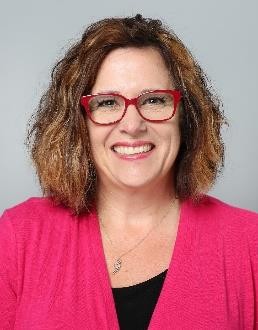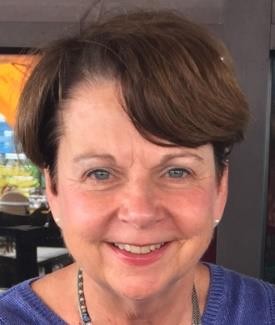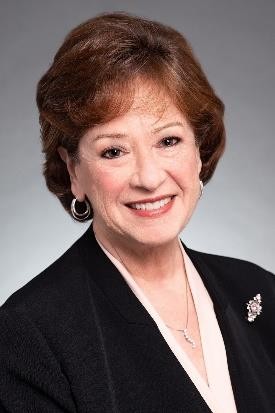W001 8-hour WS
Wednesday, Sept 4, 2024 7:00:00 AM - 4:30:00 PM
Topic: Curriculum for the Occupational Health Professional in Healthcare Basic
By Denise Knoblauch, BSN, RN, COHN-S/CM, Kathleen O'Neill, RN, CCM, CPDM, and Cathy Floyd, RN, BSN, MSN, DPA, COHN-S, CSMP, FAAOHN
Topic Overview:
This comprehensive, informative presentation is designed for the occupational health professional new to the field. The eight-hour didactic course was developed from the manual Getting Started - Occupational Health in the Healthcare Setting. The manual was originally authored and is regularly updated by the AOHP organization to reflect current practice and healthcare issues. Course content includes valuable resources to incorporate in a variety of occupational health specialty work areas; interactive discussion is encouraged. The course is presented by a team of experts who are knowledgeable in the healthcare occupational health setting. All participants will receive the 16th Edition of the Getting Started resource manual in CD format.
Objectives:
1. Describe how the occupational health professional interacts in the healthcare facility's organizational structure.
2. Identify federal, state, and local regulatory requirements as related to job placement, physical hazards, and biological and chemical exposures.
3. Review current infection prevention and control practices related to infectious diseases specifically in the healthcare setting.
4. Formulate strategies to utilize health teaching in infection prevention and control, and safety.
5. Discuss areas of medical/legal confidentiality in occupational health.
6. Discuss injury and illness prevention programs, OSHA standards, and recordkeeping requirements.
7. Review FMLA regulations and their process for implementation in the healthcare setting.
 Denise Knoblauch is currently the Occupational Health Nurse for Athletico/Pivot at Corteva Agriscience in El Paso, TX. She has 34 years of experience in occupational/employee health. She began her career as the lone employee health nurse in a small rural hospital and transitioned to an urban medical center occupational health department which provided services to the medical center employees as well as to local industries. She has experience as a clinician, coordinator, manager, case manager, and executive director in occupational health as well as infection control. She developed the case manager model in occupational health at the medical center. An active AOHP member on the local and national levels, Knoblauch has filled many leadership roles on the Executive Board. She currently is President of the Upper Midwest Chapter and a member of the Continuing Education Committee and National Conference Committee. Knoblauch has led the AOHP strategic initiative to develop Beyond Getting Started programs. She has presented many occupational health topics nationally, regionally, and locally. She is a Board-Certified Occupational Health Nurse Specialist and Case Manager from the American Board of Occupational Health Nurses (ABOHN). She is co-project manager for the AOHP Benchmarking Survey.
Denise Knoblauch is currently the Occupational Health Nurse for Athletico/Pivot at Corteva Agriscience in El Paso, TX. She has 34 years of experience in occupational/employee health. She began her career as the lone employee health nurse in a small rural hospital and transitioned to an urban medical center occupational health department which provided services to the medical center employees as well as to local industries. She has experience as a clinician, coordinator, manager, case manager, and executive director in occupational health as well as infection control. She developed the case manager model in occupational health at the medical center. An active AOHP member on the local and national levels, Knoblauch has filled many leadership roles on the Executive Board. She currently is President of the Upper Midwest Chapter and a member of the Continuing Education Committee and National Conference Committee. Knoblauch has led the AOHP strategic initiative to develop Beyond Getting Started programs. She has presented many occupational health topics nationally, regionally, and locally. She is a Board-Certified Occupational Health Nurse Specialist and Case Manager from the American Board of Occupational Health Nurses (ABOHN). She is co-project manager for the AOHP Benchmarking Survey.
 Kathleen O'Neill currently is the Human Resources Director of Employee and Occupational Health at the University of Texas Medical Branch and has a passion for keeping people safe and healthy at work. She understands that healthy employees who feel they are safe and valued are vital to business continuity and overall success. She is a nurse by background and a safety professional by trade, holding a Master of Science in Environmental and Occupational Safety. She is a Certified Case Manager and Certified Professional Disability Manager. After working for a major insurance company and building Global Occupational Health programs for several large Fortune 500 firms, she returned home to Galveston County to share what she learned and to continue learning while serving a diverse population. In 2018 she was named Chair of the university-wide Culture of Safety Committee to coordinate health and safety activity for the academic enterprise, health system (four hospitals and almost 100 clinics), Institutional Support, and Correctional Managed Care, which provides healthcare and mental services for the offender population in Texas. In 2022 she was asked to chair the Workplace Violence Prevention Committee and continues that work today.
Kathleen O'Neill currently is the Human Resources Director of Employee and Occupational Health at the University of Texas Medical Branch and has a passion for keeping people safe and healthy at work. She understands that healthy employees who feel they are safe and valued are vital to business continuity and overall success. She is a nurse by background and a safety professional by trade, holding a Master of Science in Environmental and Occupational Safety. She is a Certified Case Manager and Certified Professional Disability Manager. After working for a major insurance company and building Global Occupational Health programs for several large Fortune 500 firms, she returned home to Galveston County to share what she learned and to continue learning while serving a diverse population. In 2018 she was named Chair of the university-wide Culture of Safety Committee to coordinate health and safety activity for the academic enterprise, health system (four hospitals and almost 100 clinics), Institutional Support, and Correctional Managed Care, which provides healthcare and mental services for the offender population in Texas. In 2022 she was asked to chair the Workplace Violence Prevention Committee and continues that work today.
 Cathy Floyd has been an occupational health nurse for over 35 years. She mentors occupational and employee health staff in both hospital and non-hospital industry. A Board-Certified Occupational Health Nurse Specialist, Floyd provides an entry level, down-to-earth process for new occupational/ employee health professionals to establish disaster response programs at their worksites. She currently works as the Global Manager for Occupational Health & Wellness for Charles River Research Laboratories. She holds multiple nursing and business degrees: a Bachelor of Science in Nursing, Master of Science in Business, Master of Science in Nursing, and Doctorate in Public Administration, with additional certifications as a Safety Management Professional and in Mental Health First Aid. She is a lifelong "self-motivated learner" and makes her home near Houston, TX in Sealy with her husband, Carl, and family pet Jack Russell terriers Skipper and Bella.
Cathy Floyd has been an occupational health nurse for over 35 years. She mentors occupational and employee health staff in both hospital and non-hospital industry. A Board-Certified Occupational Health Nurse Specialist, Floyd provides an entry level, down-to-earth process for new occupational/ employee health professionals to establish disaster response programs at their worksites. She currently works as the Global Manager for Occupational Health & Wellness for Charles River Research Laboratories. She holds multiple nursing and business degrees: a Bachelor of Science in Nursing, Master of Science in Business, Master of Science in Nursing, and Doctorate in Public Administration, with additional certifications as a Safety Management Professional and in Mental Health First Aid. She is a lifelong "self-motivated learner" and makes her home near Houston, TX in Sealy with her husband, Carl, and family pet Jack Russell terriers Skipper and Bella.